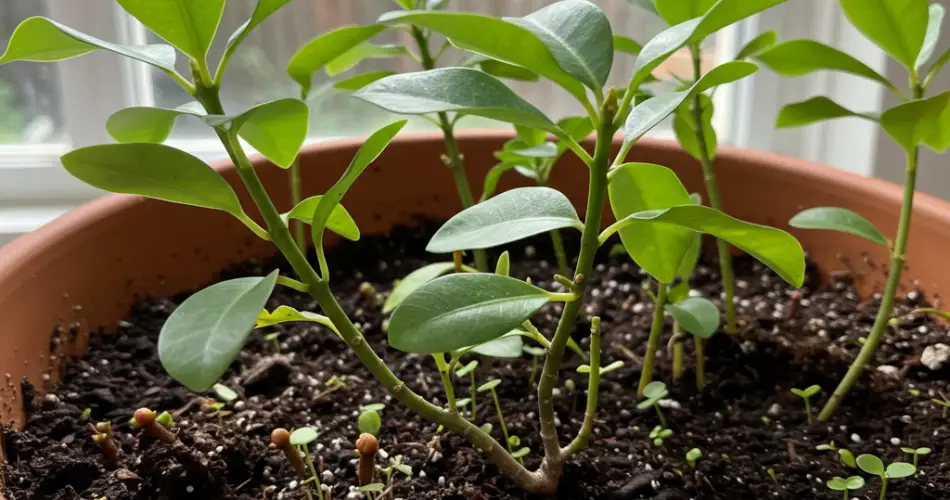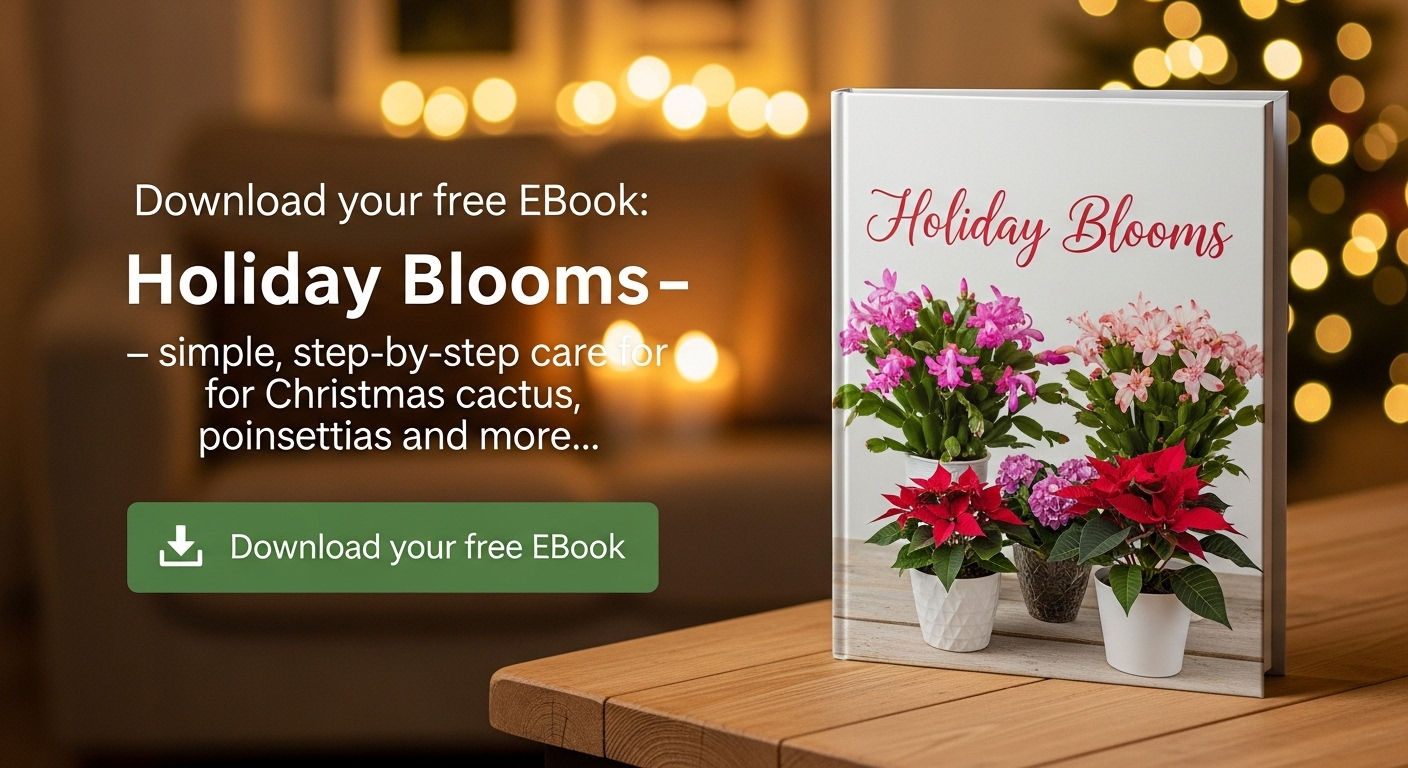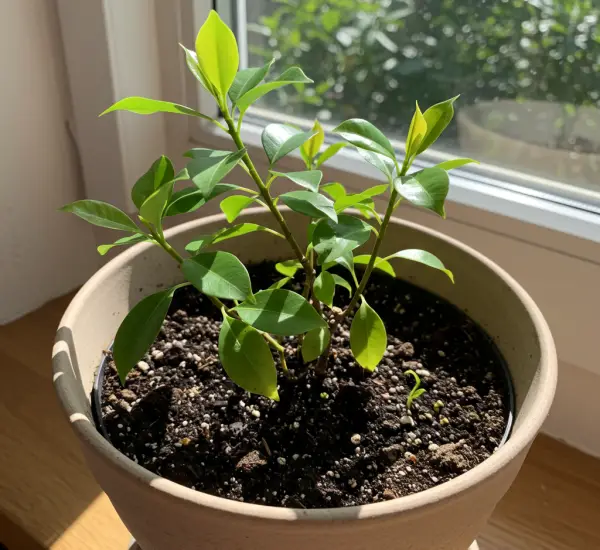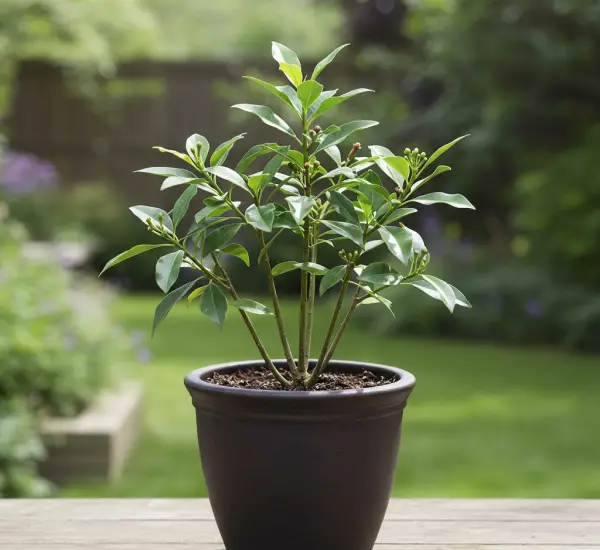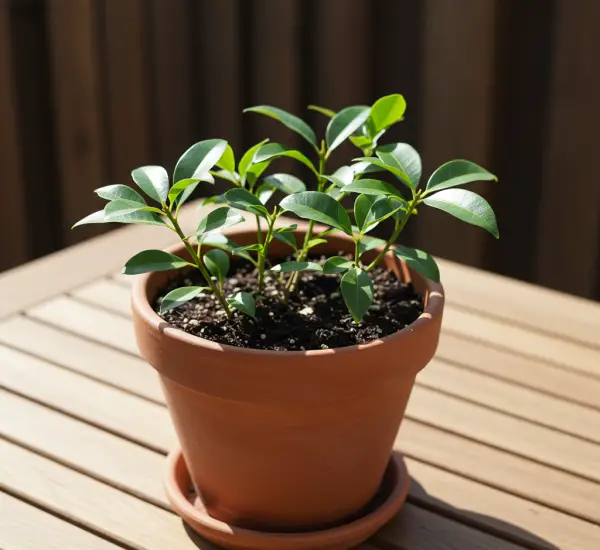Step 1: Get Fresh Clove Seeds
-
Purchase fresh, viable clove seeds from a reputable nursery or online.
-
Avoid using dried cloves from the spice rack, as they are no longer viable for planting.
-
Look for seeds that are plump, slightly moist, and free from mold.
Step 2: Prepare the Pot and Soil
-
Choose a pot with drainage holes to prevent waterlogging.
-
Use a fertile, well-draining mix: potting soil + compost + a little sand or perlite.
-
Lightly moisten the soil so it is damp but not soggy.
Step 3: Plant the Seeds
-
Plant the seeds about 2 cm deep in the soil.
-
If planting multiple seeds, leave 5–7 cm space between them.
-
Cover the pot with clear plastic or a plastic bag to create a greenhouse effect, which helps retain warmth and humidity.
Step 4: Provide Proper Light and Temperature
-
Place the pot in bright, indirect sunlight. Avoid direct sun.
-
Keep the temperature warm, ideally 25–30°C (77–86°F).
-
Clove seeds thrive in humid conditions, so consistent moisture and warmth are crucial.
Step 5: Watering and Care
-
Mist the soil lightly once a day, preferably in the morning.
-
Avoid overwatering to prevent root rot.
-
Germination usually occurs in 3–4 weeks.
-
Once seedlings emerge, gradually remove the plastic cover to adjust to normal humidity.
Step 6: Transplant Seedlings
-
When seedlings reach 10–15 cm and have several leaves, transplant them to larger pots or into a garden.
-
Choose a partially shaded spot with fertile, well-draining soil.
-
Continue to water regularly and fertilize lightly to encourage healthy growth.
Step 7: Long-Term Care
-
Clove plants are slow-growing; it may take 3–6 years to produce flower buds.
-
Maintain consistent watering, warmth, and humidity.
-
Fertilize every few weeks with a balanced or organic fertilizer.
-
Monitor for pests and remove any affected parts promptly.
Step 8: Flowering and Harvest
-
Clove buds appear as small reddish-brown buds, which are harvested before they open.
-
Dry the buds in a ventilated area away from direct sunlight.
-
These dried buds are the cloves used in cooking and remedies.
-
Mature clove plants can produce buds annually.
Extra Tips
-
Seedlings vs. seeds: Seedlings bloom faster, but seeds are more accessible and cheaper.
-
Drainage: Good drainage prevents root rot.
-
Humidity: Keep the soil humid for better germination.
-
Patience: Clove plants are long-term investments. Regular care pays off.
✅ Summary: Growing cloves from seeds at home is simple if you provide warmth, humidity, fertile soil, and patience. With proper care, your clove plant will thrive, giving you fragrant buds that can be used in cooking or natural remedies.
